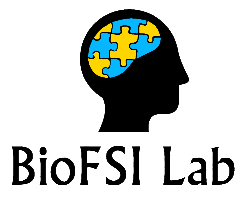
Message
Message
Developing Healthcare TechnologyWhat is Healthcare Engineering?See a video on KalturaWhy is this intervention important to medical education?Engineering in medicine is a catalyst for facilitating multidisciplinary collaborations in research and education. The focus of this intervention is to remove the boundaries between engineering and clinical disciplines. Interprofessional collaboration is defined as "when multiple health workers from different professional backgrounds work together with patients, families, caregivers, and communities to deliver the highest quality of care." However, it can be more than that as the growing importance of engineering in medicine is quickly becoming evident. Hence, individuals with engineering backgrounds cannot be excluded from the definition of such interprofessional collaboration.Do other organizations support this assertion?Engineering in medicine is becoming more of a pronounced theme in today's academic and industrial society. The field of engineering offers more potential significance to medical evolution. Many medical schools have had created centers for engineering in medicine in order to work at the convergence of engineering, science, and translational medicine (e.g., Institute for Medical Engineering and Science at MIT).What teaching method is utilized?Project-based learning is a student-centered pedagogy that involves a dynamic classroom approach in which it is believed that students acquire a deeper knowledge through active exploration of real-world challenges and problems.Why is this intervention especially important for our NYITCOM medical students?Medical students at our College of Osteopathic Medicine (NYITCOM) study/practice multitude of clinical disciplines on the same campus next to the Science, Technology, Engineering, the Arts, and Mathematics (STEAM) students from College of Engineering and Computing Sciences (NYIT-CoECS), College of Arts and Sciences (NYIT-CoAS) and School of Architecture and Design (NYIT-SoAD). Therefore, New York Tech has an immense untapped potential to contribute to the medical evolution by facilitating interprofessional collaboration between its colleges.How to apply?By e-mail: mtoma@nyit.edu.Important DatesApplication deadline: May 23, 2021End of planning phase: August 31, 2021 End of construction phase: December 15, 2021 ModulesThe program is divided into a planning phase (modules 1-3) and a construction phase (modules 4-7).
LiteratureM.-C. Chyu et al., "Healthcare Engineering Defined: A White Paper", Journal of Healthcare Engineering, vol. 6, article ID 724584, 14 pages, 2015. https://doi.org/10.1260/2040-2295.6.4.635E.S. Ng, "Bridge over troubled waters: Connecting doctors and engineers", Journal of Interprofessional Care, vol. 25, issue 6, pp. 449-451, 2011. https://doi.org/10.3109/13561820.2011.601823 A. Hassani, "Collaborative development of medical devices: qualitative study of communication between physicians and engineers", M.Sc. Thesis, University of British Columbia, 2019. https://doi.org/10.14288/1.0384521 H. Spoelstra et al., "Convergence and translation: attitudes to inter-professional learning and teaching of creative problem-solving among medical and engineering students and staff", BMC Med Educ, vol. 14, 2014. https://doi.org/10.1186/1472-6920-14-14 |
Contact Us
Phone
+1-516-686-3765
Address
Dept. of Osteopathic Manipulative Medicine
College of Osteopathic Medicine
New York Institute of Technology
Serota Academic Center, room 138
Northern Boulevard, P.O. Box 8000
Old Westbury, NY 11568
mtoma@nyit.edu
